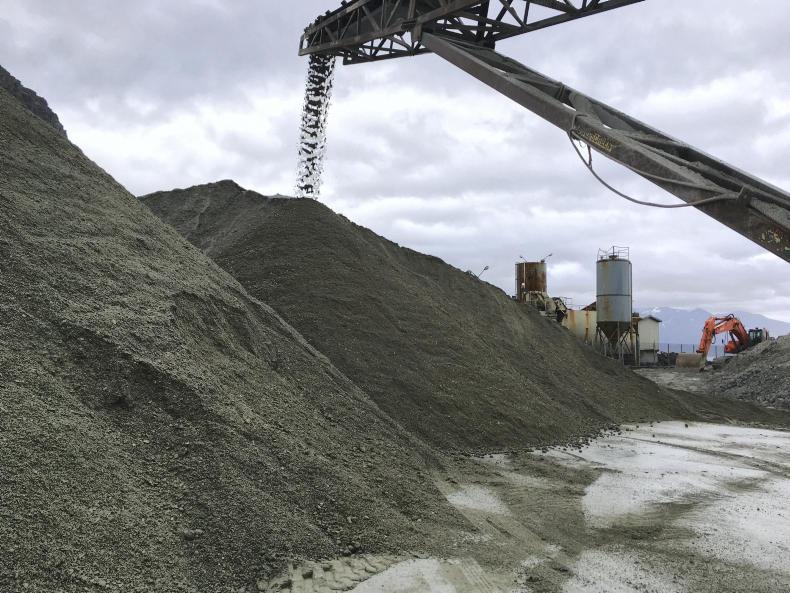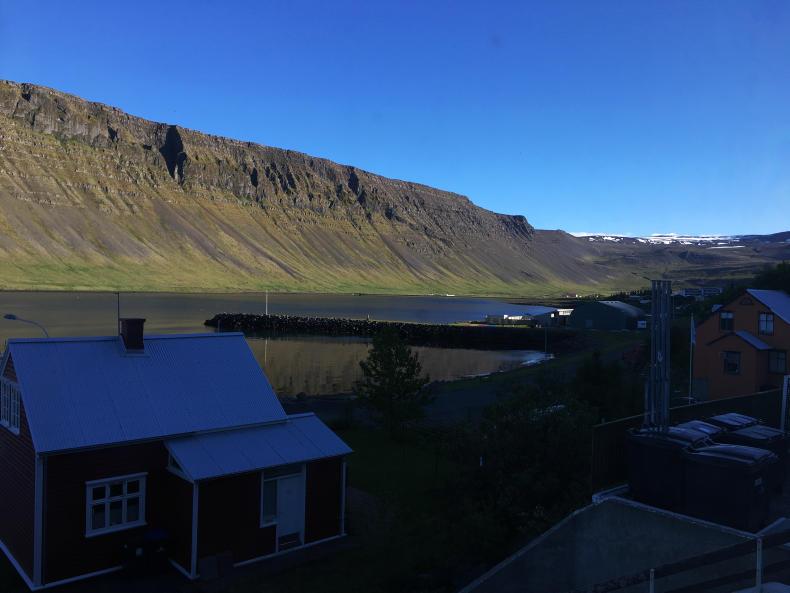In 2007, Irish company Celtic Sea Minerals opened a factory plant in Bíldudalur, Iceland, to process seaweed into an animal feed additive.The end product is Acid Buf, which acts as a rumen buffer in animals, aiding in the prevention of acidosis.
On a recent study tour of Iceland with Celtic Sea Minerals and AB Vista, the Irish Farmers Journal got to look at the operation at Bíldudalur and found out exactly how the product is made.
Background
Bíldudalur is a small fishing village located in the western fjords of Iceland. It has a population of about 200 people.
From Reykjavik it is a six hour drive over some rough terrain, including gravel roads, or a 40-minute flight to the local airport from Reykjavik.
Fishing was the main source of income in the village before the introduction of fishing quotas in Iceland in the late ’80s.
Farmers in the area were seen to be taking seaweed and using it to fertilise their land for hundreds of years.
Opportunity
Iceland is home to millions of tonnes of seaweed, red seaweed in particular. In Ireland, the only deposits are off the Cork and Galway coasts.
This is where Celtic Sea Minerals spotted an opportunity. The company was already harvesting red seaweed off the coast of Cork, however Iceland presented a much bigger opportunity, so they scoped it out and opened a plant there in 2007.
Red seaweed absorbs a range of different minerals from the sea. As the plant grows and absorbs the minerals, it calcifies, with the tips of the plant turning white, John Lawlor of Celtic Sea Minerals explained on the study tour.
After four to seven years, once the tips of the plant go white (essentially dying), they break off and float away, depositing on the seabed, away from the plant it came from.
Celtic Sea Minerals only harvests dead material for its products, the live plant is left to grow and continue its life cycle. Once harvested, it is processed and the end product result is Acid Buf.
There is a quota on how much red seaweed can be harvested by the company in a year. Currently, 50,000t are allowed to be harvested, a small percentage of the 21-22m tonnes that is deposited in Bíldudalur harbour.
The company is looking to increase its quota and its plant in Iceland has capacity for 70,000t.
The process
A ship goes out to the bay following a grid pattern, where the deposits of calcified seaweed are.
Once harvested, the calcified red seaweed is drained outside of the plant for about a week. A crane is used to move the product though a screening process, where rocks and other matter is taken away.

Drying is the next step and the end product is reduced to less than 1% moisture. In the region of 2.5t of water per hour evaporates from the dryer.
In total, the plant processes 250t/day and the end product, Acid Buf is bagged in 1,100kg bags.
It is then shipped to Castletownbere in Cork in 4,000t batches, where it’s packed.
Some 60% of Acid Buf is sold in 25kg bags, the rest is sold in bulk worldwide. Acid Buf is sold in over 40 markets globally, with over 95% of sales in export markets, with major markets being in Australia, Saudi Arabia, South Africa, North America and western Europe. All the logistics and shipping is done from Cork.
Consumer Angle
According to Lawlor, Celtic Sea Minerals is providing natural solutions for future generations.
“Consumers are more aware of where their food is coming from, how it is produced and its effect on the environment.
“It works well in the rumen as a natural buffer product. Our main markets are for dairy and beef farmers. The pig side of things is growing rapidly. By working to reduce digestive challenges in the animal, Acid Buf allows for better utilisation of feed and results in greater yields of milk or meat per kg of feed, therefore reducing the carbon footprint of food production.”
Acidosis
It is estimated that one in three intensively finished beef animals suffer from acidosis. When the pH of a cow’s rumen reduces below 5.5, acidosis occurs.
Michael Woodrow of AB Vista explained to the group that the company chose to distribute Acid Buf as it is a “unique and natural rumen buffer with bio-available calcium and magnesium. It breaks down more acid over longer periods of time in the rumen. If wet acidic silage [is being fed to cattle] it buffers the rumen, not just the silage.”
Sustainability
Sustainability is a big part of Celtic Sea Minerals’ ethos. The company has looked at the carbon footprint of Acid Buf, sustainable harvesting, social sustainability and bio-diversity enhancement.
The company has decreased its CO2 emissions per tonne of product from 393kg in 2011, to 188kg of CO2 emissions per tonne in 2016 – and there’s not a lot more that the company can do to decrease it again, Lawlor said.
To put this figure in context, for harvesting carrots and potatoes 800kg of CO2 emissions are emitted per tonne, according to a Tesco sustainability survey of its local produce.
Iceland’s famous geothermal energy has seen the plant reduces its global footprint by 99% by moving away from using natural gas.
In the next five years, it has plans to recycle heat in the plant as well as redesign its lagoon for drying out the product before it goes to be processed.






 This is a subscriber-only article
This is a subscriber-only article





SHARING OPTIONS: